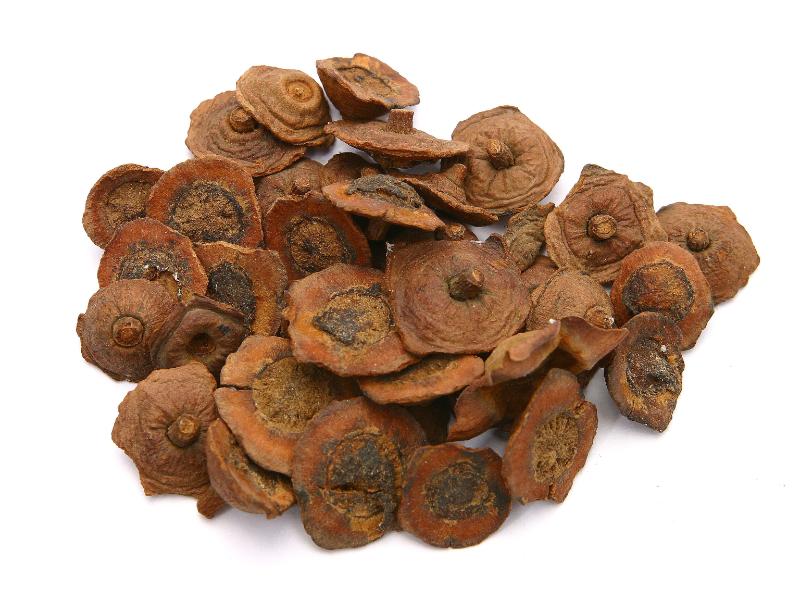Search in medicinals
Kaki Calyx
Persimmon calyx
柿蒂 〔柿蒂〕 shì dì

Alternate Chinese names: 柿丁 shì dīng; 柿萼 shì è; 柿钱 shì qián; 柿子把 shì zǐ bǎ
Kingdom: Plant
Origin in PRC Pharmacopoeia: Diospyros kaki L. f. (PRC Pharmacopoeia)
Origin in unofficial sources: Diospyros kaki L. f.
Use: Medicinal
Category: Qì-rectifying agents
Properties: Bitter, astringent; balanced.
Channel entry: Stomach channel.
Actions and indications: Downbears qì and checks hiccup: Hiccup.
Dosage and method: Oral: 6–10g in decoctions.
Product description: The dried calyx is lid-shaped, with a stalk at the tip, or a hole if it is missing. The central part is thicker, and the thinner margin comprises four triangular lobes, which often curl upward and easily break. The base is saucer-shaped, 1.5–2.5 cm, and 1–4 mm thick. The outer surface is a reddish brown. When closely observed, it is seen to have sparse fine short rust-colored hairs on the inner surface. It is hard and brittle in substance and has no smell.
Quality: Thick brown calyces with a bloom are the best.
Production area: Sìchuān, Guǎngdōng.
Etymology: The name shì dì 柿蒂 literally means persimmon stalk.